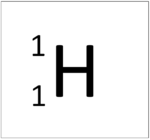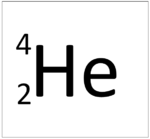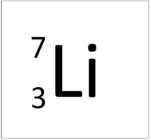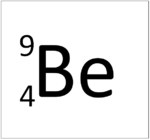Difference between revisions of "Proton"
| Line 89: | Line 89: | ||
:[https://www.amazon.co.uk/gp/product/1782948147/ref=as_li_tl?ie=UTF8&camp=1634&creative=6738&creativeASIN=1782948147&linkCode=as2&tag=nrjc-21&linkId=f63dcd8345f4e49c717b39a228a36c7c ''Protons, pages 33-37, GCSE Chemistry, CGP, Edexcel ''] | :[https://www.amazon.co.uk/gp/product/1782948147/ref=as_li_tl?ie=UTF8&camp=1634&creative=6738&creativeASIN=1782948147&linkCode=as2&tag=nrjc-21&linkId=f63dcd8345f4e49c717b39a228a36c7c ''Protons, pages 33-37, GCSE Chemistry, CGP, Edexcel ''] | ||
:[https://www.amazon.co.uk/gp/product/1292120223/ref=as_li_tl?ie=UTF8&camp=1634&creative=6738&creativeASIN=1292120223&linkCode=as2&tag=nrjc-21&linkId=068ecf40278c32406a7f1c6e66751417 ''Protons, pages 92, 140, GCSE Physics, Pearson Edexcel ''] | :[https://www.amazon.co.uk/gp/product/1292120223/ref=as_li_tl?ie=UTF8&camp=1634&creative=6738&creativeASIN=1292120223&linkCode=as2&tag=nrjc-21&linkId=068ecf40278c32406a7f1c6e66751417 ''Protons, pages 92, 140, GCSE Physics, Pearson Edexcel ''] | ||
| + | |||
| + | ====OCR==== | ||
| + | :[https://www.amazon.co.uk/gp/product/1782945679/ref=as_li_tl?ie=UTF8&camp=1634&creative=6738&creativeASIN=1782945679&linkCode=as2&tag=nrjc-21&linkId=a2db42f7b4bdf10cafaafa3bb9120940 ''Protons, pages 14, 15, Gateway GCSE Chemistry; The Revision Guide, CGP, OCR ''] | ||
| + | :[https://www.amazon.co.uk/gp/product/0198359837/ref=as_li_tl?ie=UTF8&camp=1634&creative=6738&creativeASIN=0198359837&linkCode=as2&tag=nrjc-21&linkId=3c4229e8b023b2b60768e7ea2307cc6f ''Protons, pages 20-21, 170-171, 179, Gateway GCSE Physics, Oxford, OCR ''] | ||
| + | :[https://www.amazon.co.uk/gp/product/0198359829/ref=as_li_tl?ie=UTF8&camp=1634&creative=6738&creativeASIN=0198359829&linkCode=as2&tag=nrjc-21&linkId=90e8d7b4f039d53035238fa0320fe00b ''Protons, pages 27, 28-29, Gateway GCSE Chemistry, Oxford, OCR ''] | ||
| + | :[https://www.amazon.co.uk/gp/product/1782945695/ref=as_li_tl?ie=UTF8&camp=1634&creative=6738&creativeASIN=1782945695&linkCode=as2&tag=nrjc-21&linkId=ceafcc80bcad6b6754ee97a0c7ceea53 ''Protons, pages 84-86, 150, 195, Gateway GCSE Combined Science; The Revision Guide, CGP, OCR ''] | ||
Latest revision as of 17:08, 18 December 2019
Contents
Key Stage 4
Meaning
The Proton is a positively charged particle found in the nucleus of an atom.
About Protons
- Protons are a type of nucleon.
- Protons have a relative atomic charge of +1 and a relative atomic mass of 1.
| Hydrogen | Helium | Lithium | Beryllium |
| This atom has an Atomic Number (Z) of 1 therefore it contains 1 proton. | This atom has an Atomic Number (Z) of 2 therefore it contains 2 proton. | This atom has an Atomic Number (Z) of 3 therefore it contains 3 proton. | This atom has an Atomic Number (Z) of 4 therefore it contains 4 proton. |
Key Stage 5
Meaning
A proton (p) is a baryon made from 2 up-quarks and 1 down-quark.
About Protons
- The proton is denoted with a lower case p.
- A proton is one of two baryons found in the atomic nucleus.
- Protons have a charge of 1.60x10-19 Coulombs (the elementary charge) and a mass of 1.67x10-27kg.
- A proton is the most stable hadron with a half life longer than the age of the Universe.
| Subatomic Particle | Quark-composition | Charge/e | Strangeness | Baryon Number | Lepton Number |
| \(uud\) | \(Q=+1\) | \(S=0\) | \(B=+1\) | \(L=0\) | |
| \(\bar{u}\bar{u}\bar{d}\) | \(Q=-1\) | \(S=0\) | \(B=-1\) | \(L=0\) |
References
AQA
- Proton, pages 108-11, 133, GCSE Physics; Student Book, Collins, AQA
- Proton, pages 13, 24-5, GCSE Chemistry; Student Book, Collins, AQA
- Protons, page 88, GCSE Physics, Hodder, AQA
- Protons, pages 117-18, 338, 339, GCSE Combined Science Trilogy 1, Hodder, AQA
- Protons, pages 12, 13, 19, 21, GCSE Chemistry; The Revision Guide, CGP, AQA
- Protons, pages 122, 123, GCSE Physics; The Complete 9-1 Course for AQA, CGP, AQA
- Protons, pages 13-15, GCSE Chemistry; Third Edition, Oxford University Press, AQA
- Protons, pages 22-25, 43, 70, GCSE Combined Science Trilogy; Chemistry, CGP, AQA
- Protons, pages 22-25, 43, 72, GCSE Chemistry, CGP, AQA
- Protons, pages 2-3, GCSE Chemistry, Hodder, AQA
- Protons, pages 43-45, GCSE Physics; The Revision Guide, CGP, AQA
- Protons, pages 50,95, GCSE Physics; Third Edition, Oxford University Press, AQA
- Protons, pages 96, 97, 104, 197, 198, GCSE Combined Science; The Revision Guide, CGP, AQA
- Protons, pages, 110, 111, GCSE Combined Science Trilogy; Physics, CGP, AQA
- Protons; atomic number and mass number, page 89, GCSE Physics, Hodder, AQA
Edexcel
- Protons, page 16, GCSE Chemistry; The Revision Guide, CGP, Edexcel
- Protons, page 18, GCSE Chemistry, Pearson, Edexcel
- Protons, page 79, GCSE Combined Science; The Revision Guide, CGP, Edexcel
- Protons, pages 152, 155, GCSE Physics, CGP, Edexcel
- Protons, pages 33-37, GCSE Chemistry, CGP, Edexcel
- Protons, pages 92, 140, GCSE Physics, Pearson Edexcel



